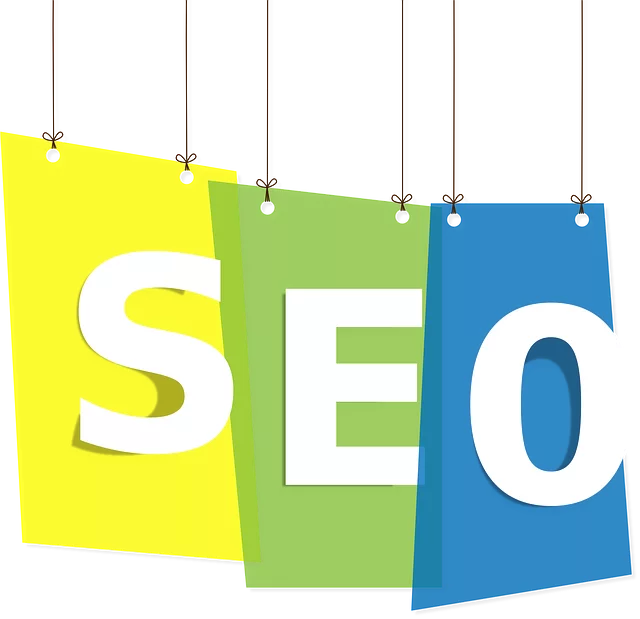On-Page Optimization Training equips professionals with skills to optimize web pages for better search rankings and user experiences. Key strategies include keyword research, meta tag creation, content structuring, header tags, and image optimization using tools like Google Keyword Planner. Effective on-page SEO boosts discoverability, enhances website traffic, and aligns content with search engine algorithms. Training emphasizes creating engaging, high-quality content, utilizing header tags correctly, and implementing technical optimizations for accessibility and better rankings in a competitive digital landscape.
“Unleash your website’s full potential with an in-depth look at On-Page SEO Basics. In today’s digital landscape, understanding and implementing effective on-page optimization is crucial for boosting online visibility. From keyword research to technical adjustments, this comprehensive guide offers a wealth of knowledge for beginners and seasoned marketers alike. Master essential techniques, including crafting compelling titles, writing persuasive meta descriptions, optimizing content, structuring headers, enhancing images, and ensuring website accessibility. Take control of your digital presence with our On-Page Optimization Training.”
Understanding On-Page SEO: The Cornerstone of Digital Visibility

On-Page SEO, often referred to as On-Site SEO, is a fundamental aspect of digital marketing and search engine optimization (SEO). It involves optimizing individual web pages to rank higher in search results, thereby increasing online visibility. By focusing on elements within a website’s control, such as content, metadata, headings, and site structure, businesses can attract more organic traffic from relevant audiences.
On-Page Optimization Training is essential for any digital marketing strategy. It equips professionals with the knowledge to understand how search engines crawl and index web pages, enabling them to make informed decisions. Through this training, individuals learn best practices for keyword research, creating compelling meta titles and descriptions, structuring content effectively, and leveraging headings to enhance readability. These skills are crucial in ensuring that each page on a website communicates clearly with both users and search engine algorithms, ultimately leading to improved rankings and better user experiences.
Keyword Research: Unlocking the Power of Relevant Terms

Keyword research is a fundamental aspect of on-page SEO, and it’s where the real magic happens. It involves identifying the specific terms and phrases that potential customers use when searching for products or services related to your niche. By understanding user intent behind these keywords, you can create content that resonates with your target audience. Tools like Google Keyword Planner, SEMrush, and Ahrefs offer valuable insights into search volumes, competition levels, and even suggest related keywords, making it easier to uncover hidden gems relevant to your business.
This process ensures that your on-page optimization training remains practical and effective. When you incorporate relevant keywords naturally throughout your website’s content—in headings, meta descriptions, URL structures, and body text—you enhance its discoverability on search engines. It’s about providing the right information at the right time to satisfy user queries, thereby increasing your website’s chances of ranking higher in search results.
Optimizing Title Tags: Crafting Compelling Headlines

In the realm of On-Page SEO Basics, optimizing title tags is a cornerstone of successful digital marketing strategies. Title tags, also known as headlines, are the first point of contact between your content and potential visitors. Crafting compelling headlines involves balancing keyword relevance with user appeal. Since search engines heavily rely on these tags to understand the essence of your page, integrating relevant keywords seamlessly can significantly boost your search rankings.
Effective title tag optimization goes beyond mere keyword stuffing. It entails creating headlines that are not only SEO-friendly but also engage and entice users to click through. A well-crafted headline offers a clear indication of what readers can expect from the content ahead, fostering a positive user experience. This balance between on-page optimization training and user satisfaction is key to achieving long-term success in today’s competitive digital landscape.
Meta Descriptions: Persuading Click-Through Rates

Meta descriptions play a pivotal role in on-page SEO, acting as powerful tools to persuade click-through rates (CTRs). These concise snippets of text appear beneath search engine results pages (SERPs), providing users with a quick glimpse into what a website offers. Crafting compelling meta descriptions involves a blend of art and science. It requires understanding user intent and incorporating relevant keywords naturally, aligning with Google’s guidelines for quality content.
Effective meta descriptions go beyond mere keyword stuffing. They should accurately represent the page’s content while inviting users to click. On-page optimization training emphasizes the importance of balancing persuasive language with search engine algorithms. A well-crafted meta description can significantly boost CTRs, increasing visibility and driving more traffic to your website.
Content Creation for SEO: Strategies and Best Practices

Creating content that’s both engaging and optimized for search engines is a key aspect of on-page SEO. To excel in this area, focus on producing high-quality, relevant, and keyword-rich content. Conduct thorough keyword research to identify terms your target audience uses when searching for information related to your niche. Incorporate these keywords naturally throughout your text, ensuring a balanced readability without overstuffing. A successful strategy involves strategic placement of primary and secondary keywords in headings, subheadings, meta descriptions, and image alt tags.
Best practices include maintaining a consistent writing style that aligns with your brand voice while adhering to search engine guidelines. Regularly update your content to keep it fresh and relevant, as search engines favor current information. Additionally, incorporating multimedia elements like images, videos, and infographics can enhance user experience and encourage engagement, contributing positively to on-page optimization training.
Header Tags: Structuring Your Content Effectively

Header tags, also known as heading tags or H-tags, are a fundamental component of on-page optimization training. They serve as a way to structure and organize your content, making it not only more readable for users but also helping search engines understand the hierarchy and relevance of different parts of your text. The six primary header tags range from `
` (the most important) to `
` (the least important). Using these effectively can significantly boost your on-page optimization efforts.
When structuring your content, it’s crucial to assign each section a relevant header tag. For instance, the main title of your page should be within `
`, while subheadings and key topics are best represented by `
`, `
`, etc. This clear hierarchy not only enhances user experience but also signals to search engines what your content is about. Remember, each `
` should be unique for each page, as it plays a significant role in on-page optimization training by identifying the primary subject matter of the page.
Image Optimization: Enhancing Visual Search Experience
`, etc. This clear hierarchy not only enhances user experience but also signals to search engines what your content is about. Remember, each `
` should be unique for each page, as it plays a significant role in on-page optimization training by identifying the primary subject matter of the page.
Image Optimization: Enhancing Visual Search Experience
Image Optimization: Enhancing Visual Search Experience

In today’s digital era, on-page optimization is a cornerstone of successful SEO strategies. Image optimization plays a vital role within this realm, significantly enhancing visual search experiences. When integrating on-page optimization training, ensuring your images are optimized can dramatically improve website visibility and user engagement. This involves more than just alt tags; it includes compressing image files to reduce loading times without sacrificing quality, choosing descriptive file names that align with your content, and utilizing relevant captions to provide context.
These strategies not only assist search engine crawlers in understanding the visual content but also make your website more accessible and user-friendly. By focusing on these image optimization practices, you can ensure that your visuals contribute positively to your overall SEO performance, making your site more attractive to both search engines and visitors alike.
Technical On-Page SEO: Ensuring Website Accessibility

Technical On-Page SEO is a crucial aspect often overlooked but plays a pivotal role in boosting your website’s visibility and accessibility, especially for search engines. This involves ensuring your website is structured and coded in a way that makes it easy to navigate for both users and search engine crawlers. One of the primary focuses here is on web accessibility standards, which are essential for creating an inclusive digital experience for everyone. By implementing these standards, you make your site accessible to individuals with disabilities, thereby improving user satisfaction and search engine rankings.
Web accessibility includes various elements like ensuring proper heading structures, alternative text for images, and a logical page hierarchy. These technical optimizations not only help users with visual or motor impairments but also impact how search engines crawl and index your pages. Proper on-page optimization training should cover these fundamentals, enabling website owners to create a solid foundation for their online presence, making their sites more discoverable and user-friendly.
